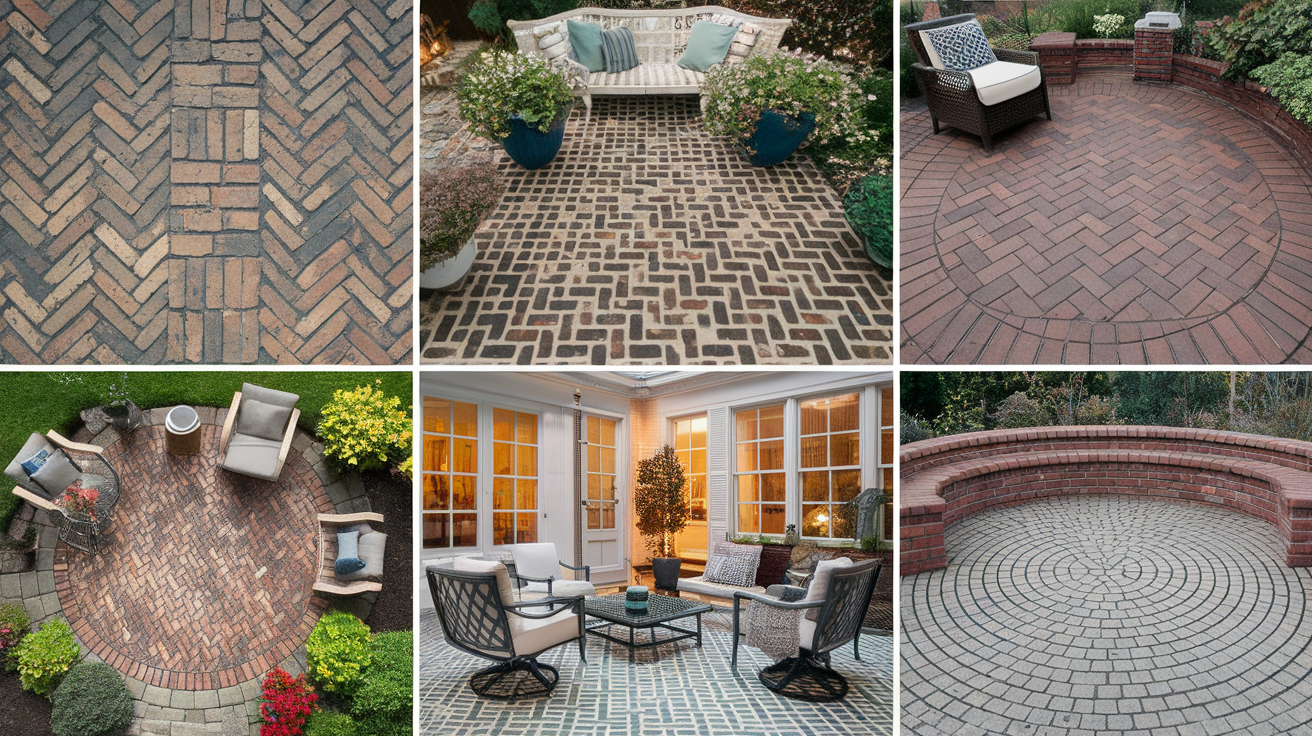I’ve always loved the look of brick patios. There’s something warm and welcoming about them, and they never go out of style.
When I started planning my own outdoor space, I got a little overwhelmed by all the different brick patterns out there.
I had no idea there were so many styles to pick from, some classic, others really creative.
If you’re in the same boat, I’ve got you covered.
In this post, I’ll walk you through a bunch of brick patio pattern ideas, from traditional layouts like herringbone and running bond to more unique ones like circular or mosaic designs.
I’ll also share some helpful tips about installation and how to make your patio stand out.
No matter if you’re starting fresh or updating an old patio, these ideas will help you build a space that looks great and feels just right.
Why Go for a Brick Patio Pattern?
Brick patio patterns aren’t just about looks; they serve a real purpose.
I’ve found that choosing the right pattern can actually make your patio stronger and last longer.
Patterns like herringbone or basket weave help lock the bricks in place, which means fewer shifts and cracks over time.
They also give your outdoor space more personality. A simple running bond might feel clean and classic, while a circular layout can turn your patio into a real showpiece.
You can even mix colors or sizes for a totally custom look.
Another reason I like brick is that it’s super durable and low-maintenance. Once it’s laid down, it can handle rain, sun, and foot traffic for years.
So if you want something that’s both stylish and practical, a brick patio pattern is definitely worth considering.
Popular Brick Patio Patterns
If you’re planning a patio, choosing a brick pattern can completely change the way your space looks and feels.
1. Running Bond

The running bond is one of the simplest brick patterns and a favorite for good reason. Bricks are laid in straight lines with each row offset by half a brick.
This layout works great for small or narrow patios since it creates the illusion of length. It’s easy to install and uses fewer cuts, which helps keep things budget-friendly.
Running bond is also a smart pick for walkways or side areas where you want a clean, linear look.
2. Herringbone (45° and 90°)
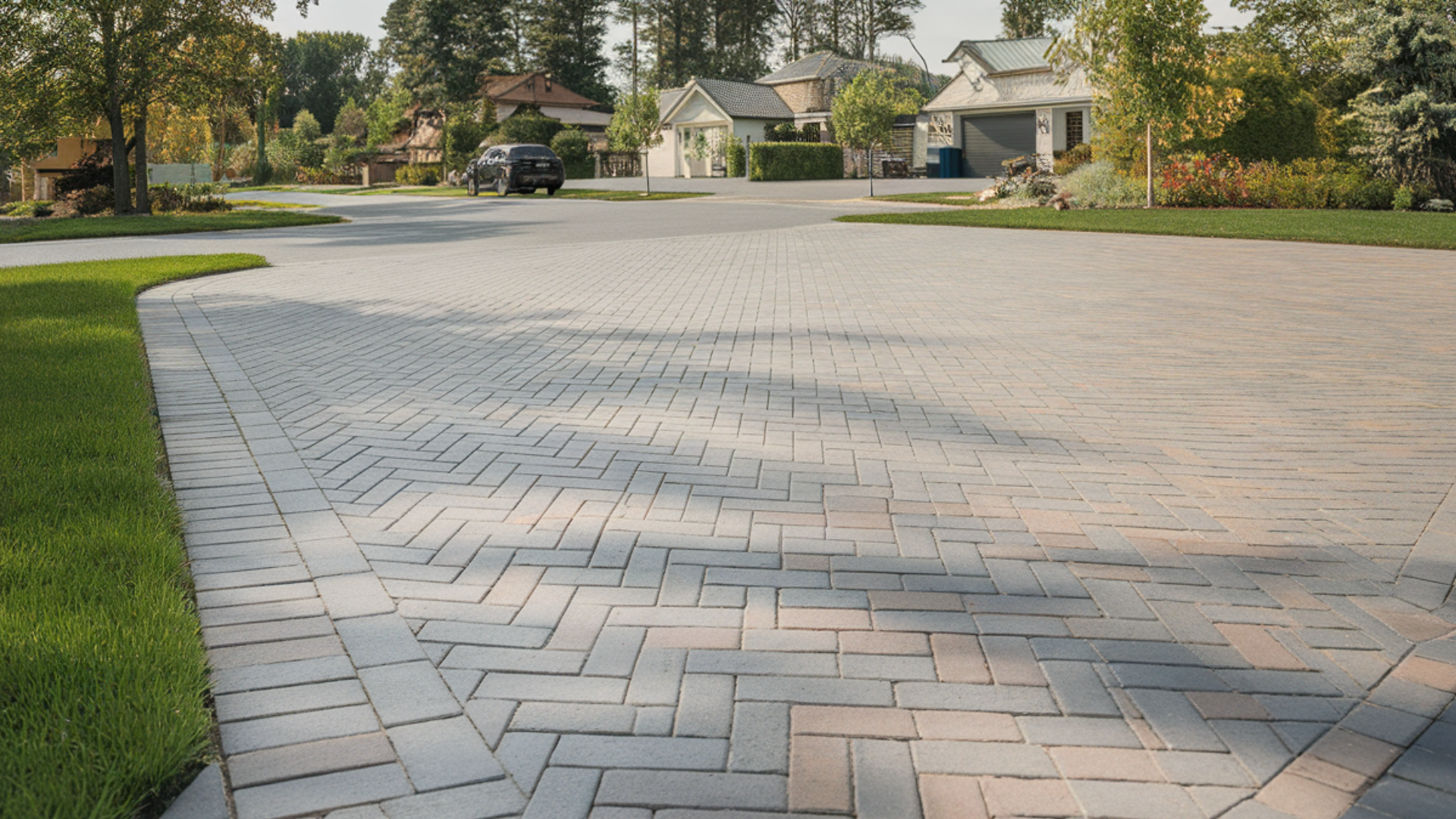
The herringbone pattern is both elegant and practical. Bricks are laid at 45° or 90° angles to form a zigzag design, making it one of the strongest interlocking options out there.
I used this in a high-traffic area in my backyard, and it’s held up beautifully. It resists shifting and spreading better than most layouts.
The angled design draws the eye and adds energy to the space.
It does take a bit more planning and cutting, but the final look is absolutely worth it. Use it for patios, paths, or driveways when you want beauty and durability all in one.
3. Basket Weave

Basket weave gives off an old-world charm that’s perfect for cottage gardens and cozy patios.
It pairs bricks side by side horizontally and vertically, repeating the pattern to create a checkerboard look.
I’ve always liked this design for smaller spots because it has a decorative feel without looking too busy. It works especially well with bricks in natural red or earthy tones.
The pattern is fairly simple to lay and doesn’t require a lot of trimming, which helps cut down on waste.
It’s a great choice if you want something charming, symmetrical, and easy on the eyes.
4. Stack Bond
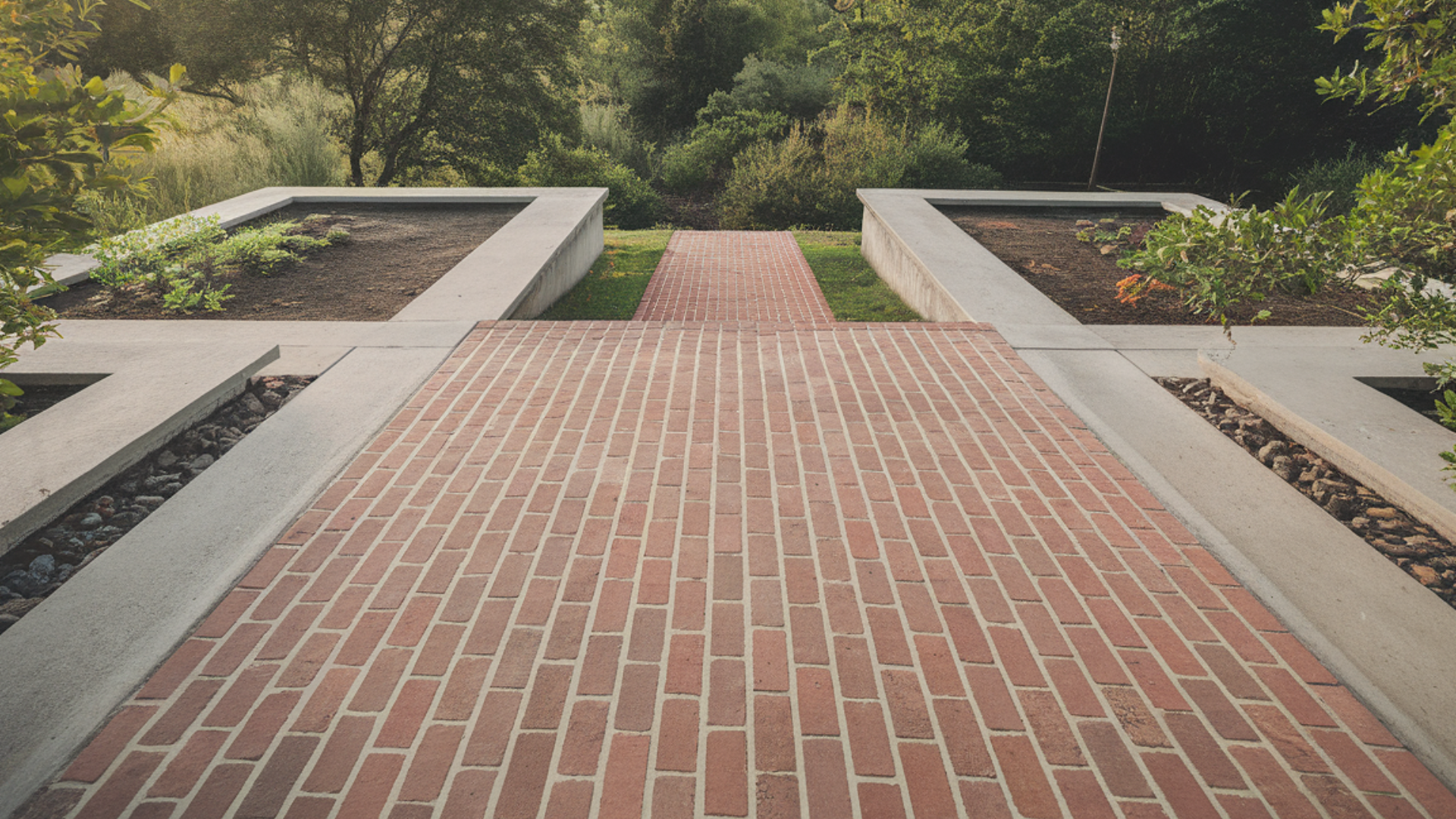
Stack bond is as modern as it gets. Bricks are aligned perfectly on top of one another in straight lines, both vertically and horizontally.
This layout gives off a very clean and structured look.
While it’s not as strong as other patterns when used on its own, it works well for patios that aren’t under heavy pressure.
If you like minimalism and want your space to feel sleek and geometric, this one’s worth considering.
You can also mix in different brick colors for a bolder visual effect. It’s not one I’ve used personally, but I love how sharp it can look.
5. Circular Pattern

If you’re aiming for a dramatic centerpiece, the circular pattern is a stunning choice. Bricks are arranged in arcs or full circles, radiating out from a center point.
It takes careful planning and often involves trimming the bricks to fit the curves, but the final effect is eye-catching.
I’ve seen it used around fire pits, fountains, or in the center of a larger patio for a grand look.
You can use one color for a seamless circle or alternate shades to highlight the curve. It’s definitely a high-impact option that brings artful flow to the patio.
6. Pinwheel
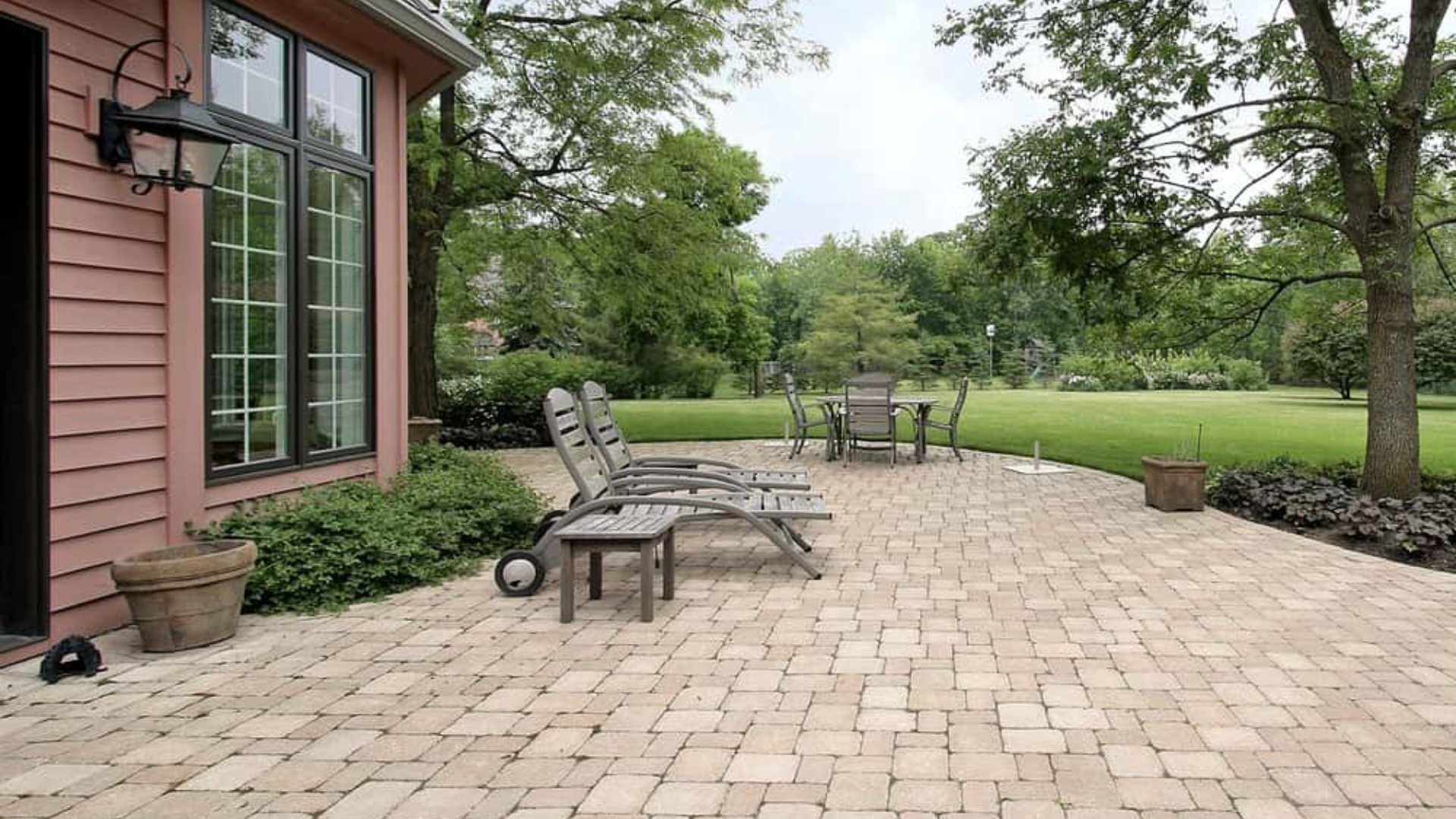
The pinwheel pattern arranges four bricks around a small square, usually filled with a half brick or stone. This layout has a decorative, almost tiled feel to it.
It’s a playful option that adds visual movement and pattern repetition. I think it’s ideal for patios where you want to break away from straight lines and do something different.
You can change the center color to create a little pop, or keep it subtle for a more uniform look. While it takes some careful measuring, it’s a fun and stylish pattern to try.
7. Chevron

Chevron is often confused with herringbone, but there’s a key difference: bricks in chevron are cut at an angle so the ends meet to form perfect V shapes.
The result is a very modern, tailored look that’s full of motion. It’s great for creating the illusion of length or guiding the eye across a space.
Because it requires angled cuts, installation can be a little more technical. But if you want a sharp and contemporary pattern, this one’s hard to beat.
It’s also a smart way to make your patio look more custom and high-end.
8. Grid Pattern with Accent Bricks

This pattern uses large squares or rectangles filled with standard brick, stone, or cement layouts, bordered by bricks in a contrasting color or direction.
It’s a flexible way to bring structure and creativity together. I like how it allows you to mix several patterns without making the patio feel cluttered.
You can go subtle with tone-on-tone brick, or go bold with color shifts. This layout is great for breaking up large areas and adding visual rhythm.
9. Diamond Pattern
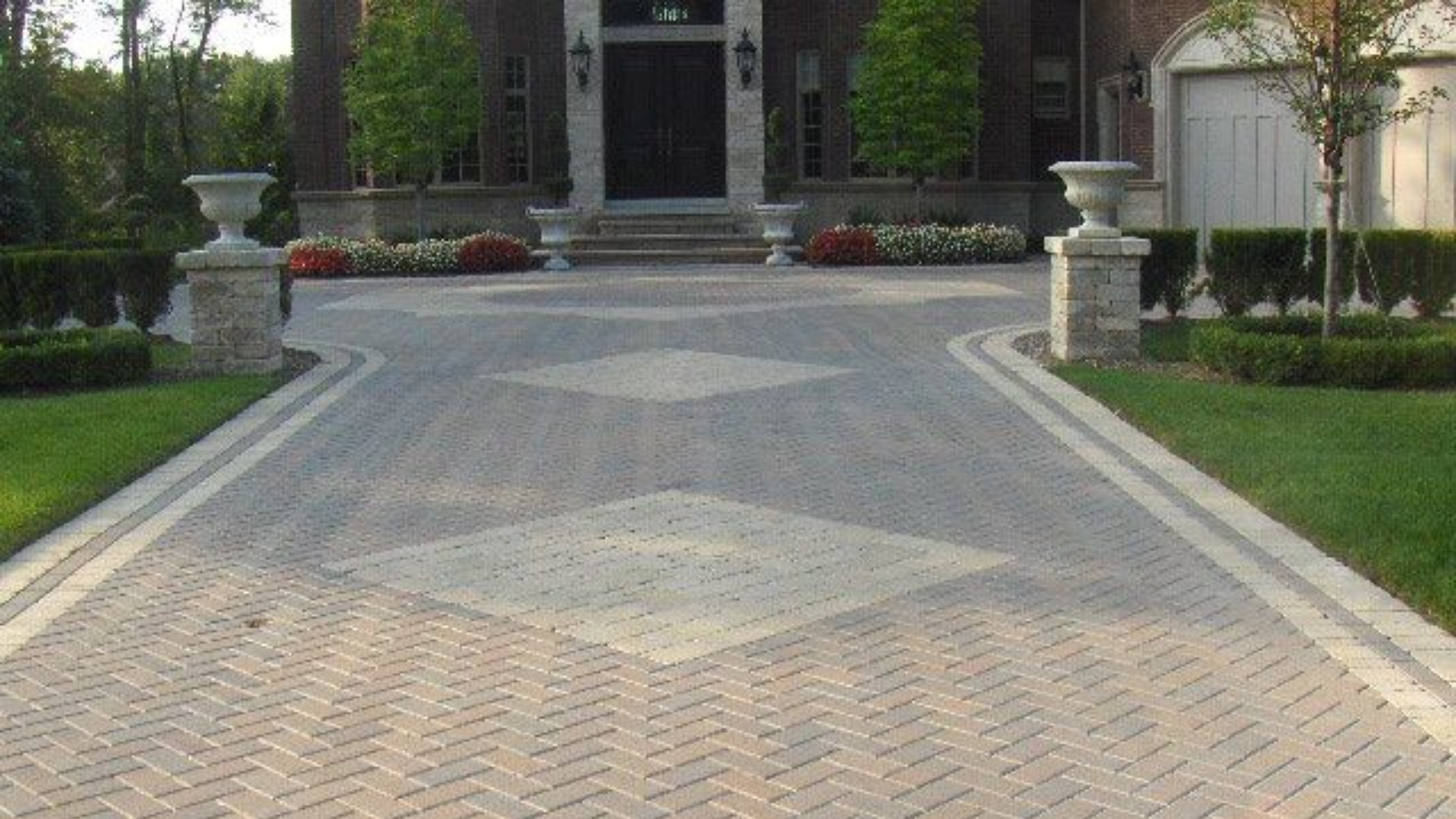
The diamond pattern turns square layouts on an angle, giving your patio a bold, eye-catching look.
It’s a simple idea, just rotate your regular grid 45 degrees, but the effect is dramatic.
I like how it instantly makes a basic space feel more special without needing a whole new material.
You can use a single brick tone for a clean style or alternate colors for a quilt-like design.
This pattern works especially well for square or rectangular patios.
Installation takes some planning and extra edge cuts, but the end result looks polished and creative without being too flashy.
10. Spiral Brick Layout
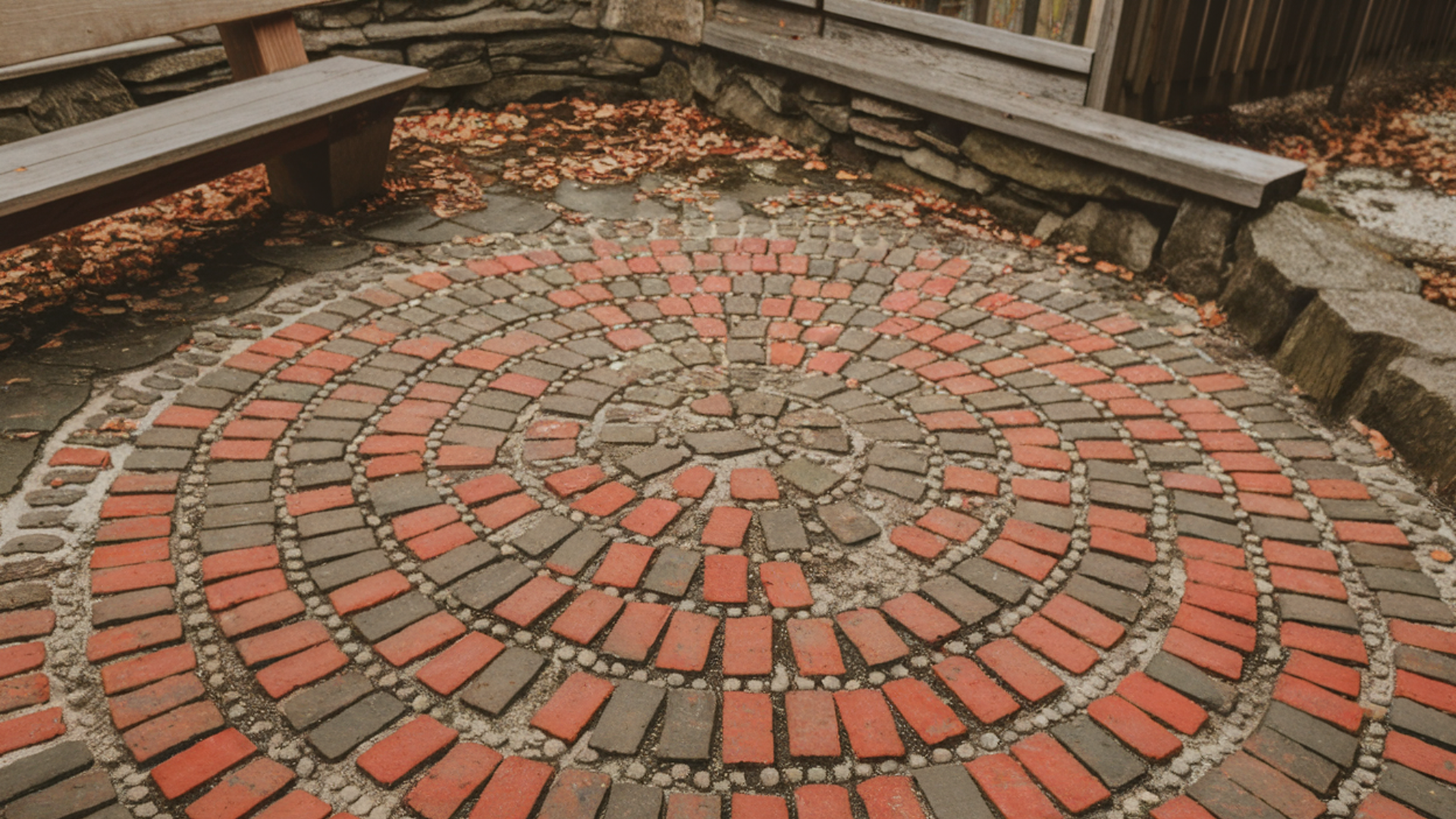
The spiral pattern builds from a center point and works outward, creating a twisting motion that’s full of movement.
It’s often used in modern garden patios or artistic backyard corners.
I find this layout best for small circular patios or areas where you want a strong visual anchor.
It takes careful planning and usually requires custom brick cutting around the outer edges.
However, the final effect is unique and sophisticated, perfect for setting your outdoor space apart.
Use uniform brick colors for subtlety or mixed tones for a swirling, eye-catching finish.
11. Checkerboard Pattern

This layout uses alternating colors of bricks in a basic square or a fun zig-zag layout, mimicking the look of a checkerboard. It’s playful, geometric, and easy to understand.
It doesn’t need any special cuts and lays down quickly. Use red and tan bricks for a more traditional look or go modern with gray and charcoal.
I like using this pattern in small patios or garden walkways where you want a bit of fun.
It’s not the most subtle design, but it definitely makes a statement and adds personality to otherwise plain spaces.
12. Random Layout
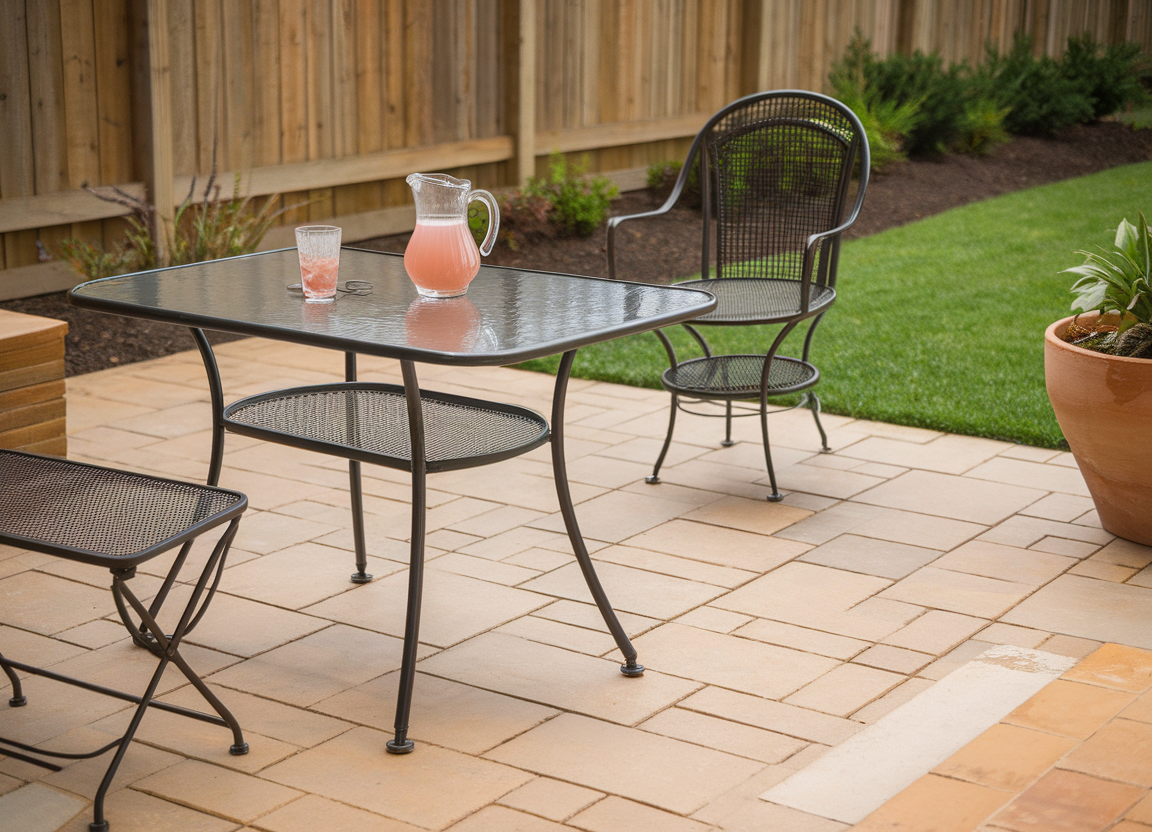
Also known as “free-form,” this pattern uses bricks of different sizes laid out in no particular repeating order.
It creates a casual, rustic vibe that works really well in garden settings or patios with a natural stone feel.
I think this is one of the easiest patterns to DIY, since it doesn’t require perfect alignment.
It’s also forgiving if you have leftover bricks from another project. The result feels organic and relaxed, which is great if you’re going for a laid-back outdoor atmosphere.
13. Fan Pattern
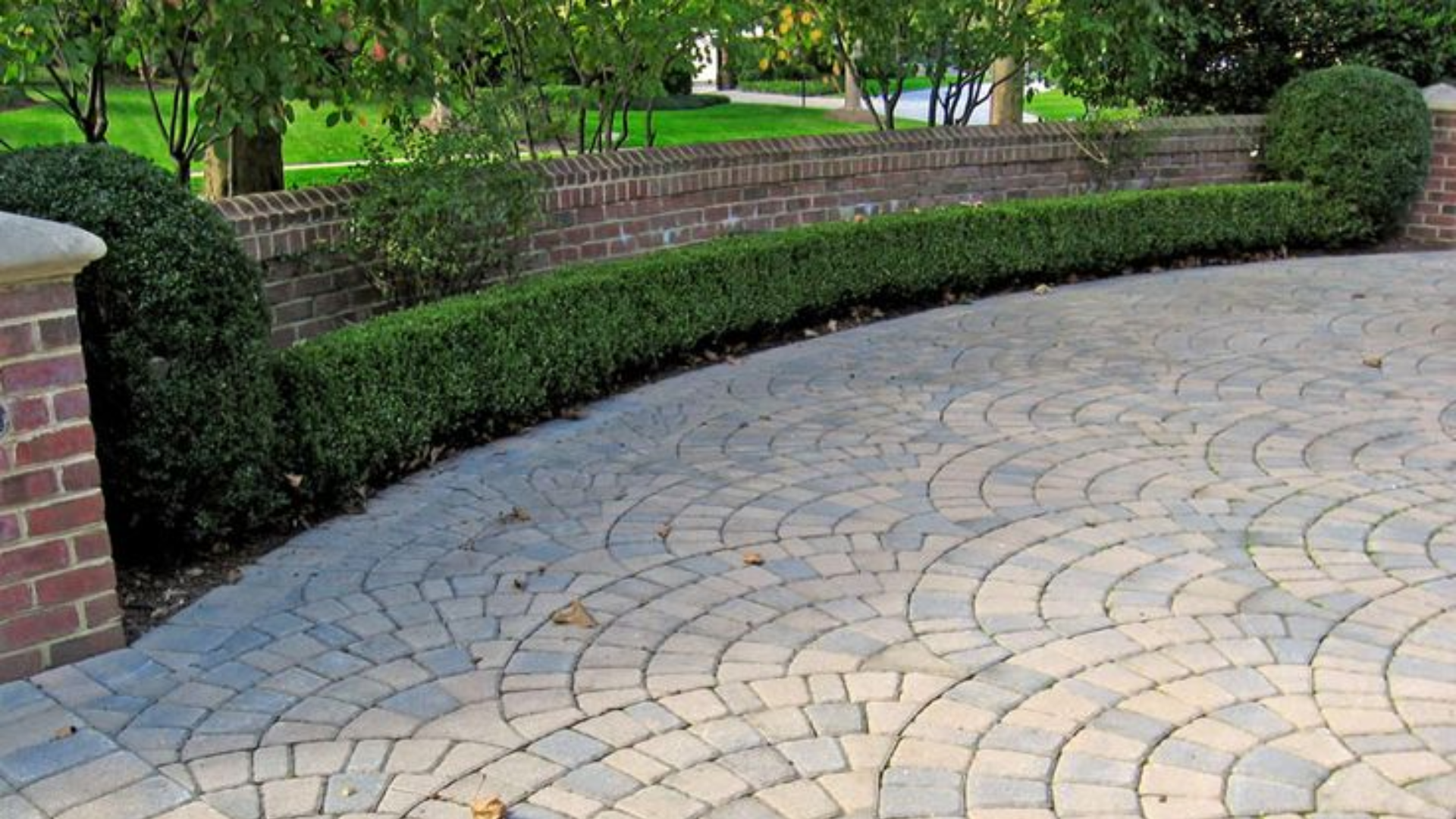
The fan pattern is a curved layout where bricks are placed in an arching, fan-like shape.
It’s often used in European courtyards and brings an old-world elegance to any space. The curved lines soften the patio and make it feel more inviting.
I recommend using this pattern in entrance areas or near curved garden beds.
It does require quite a bit of brick shaping and careful placement, but it can be a stunning choice for showpiece areas.
Definitely one of the more artistic patterns on this list.
14. Zigzag Pattern
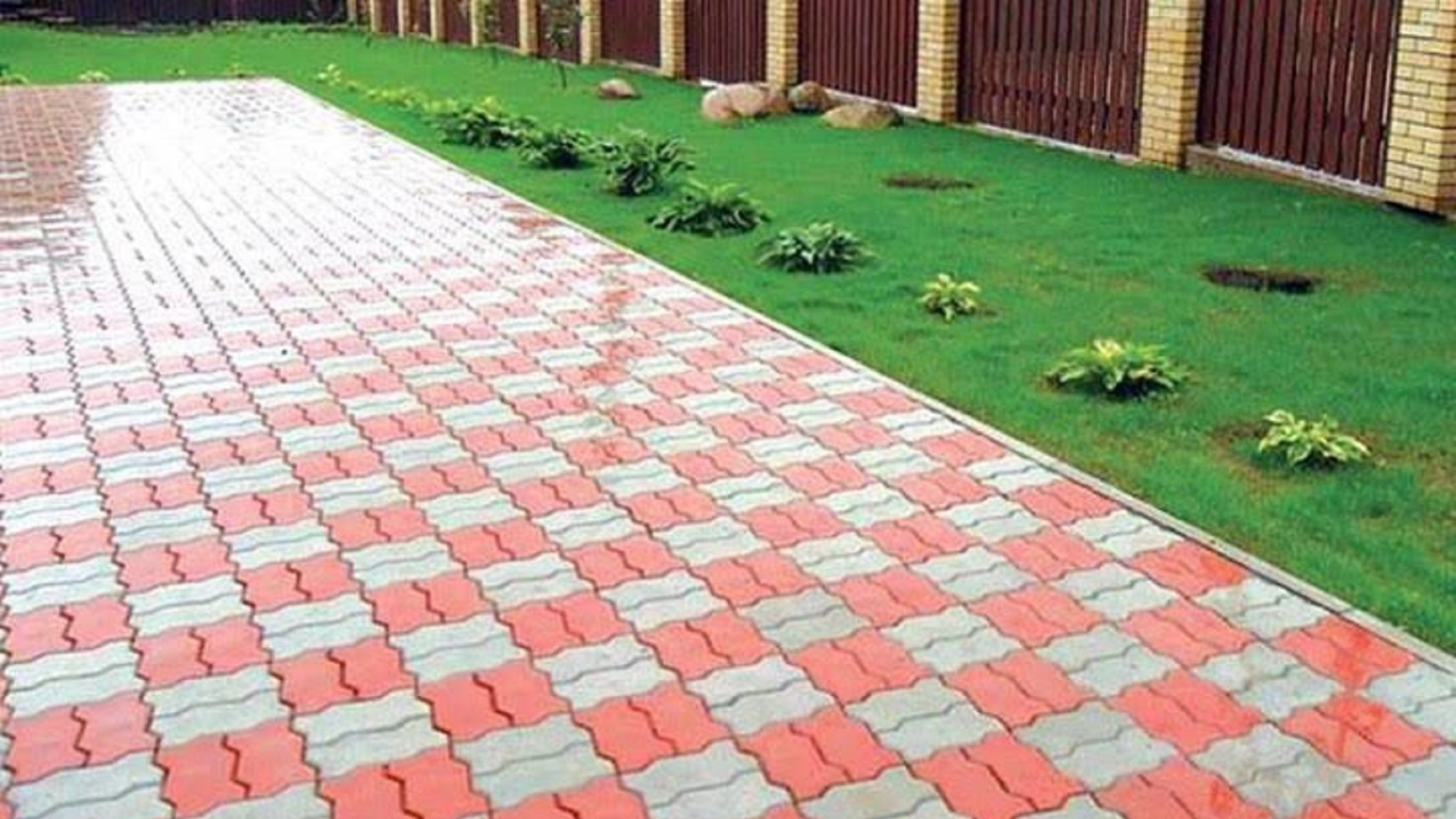
Zigzag is similar to herringbone but with a looser, wider spacing that creates a more relaxed feel.
It works great in rustic patios or garden paths where perfect lines aren’t the goal.
I find this pattern easy to adapt if you’re working with uneven bricks or an irregular surface. It brings motion and texture without feeling too rigid or formal.
Use this layout when you want something eye-catching but not overly designed. It’s playful and a little unexpected, which makes it a fun choice for casual outdoor spaces.
15. Mixed Size Layout
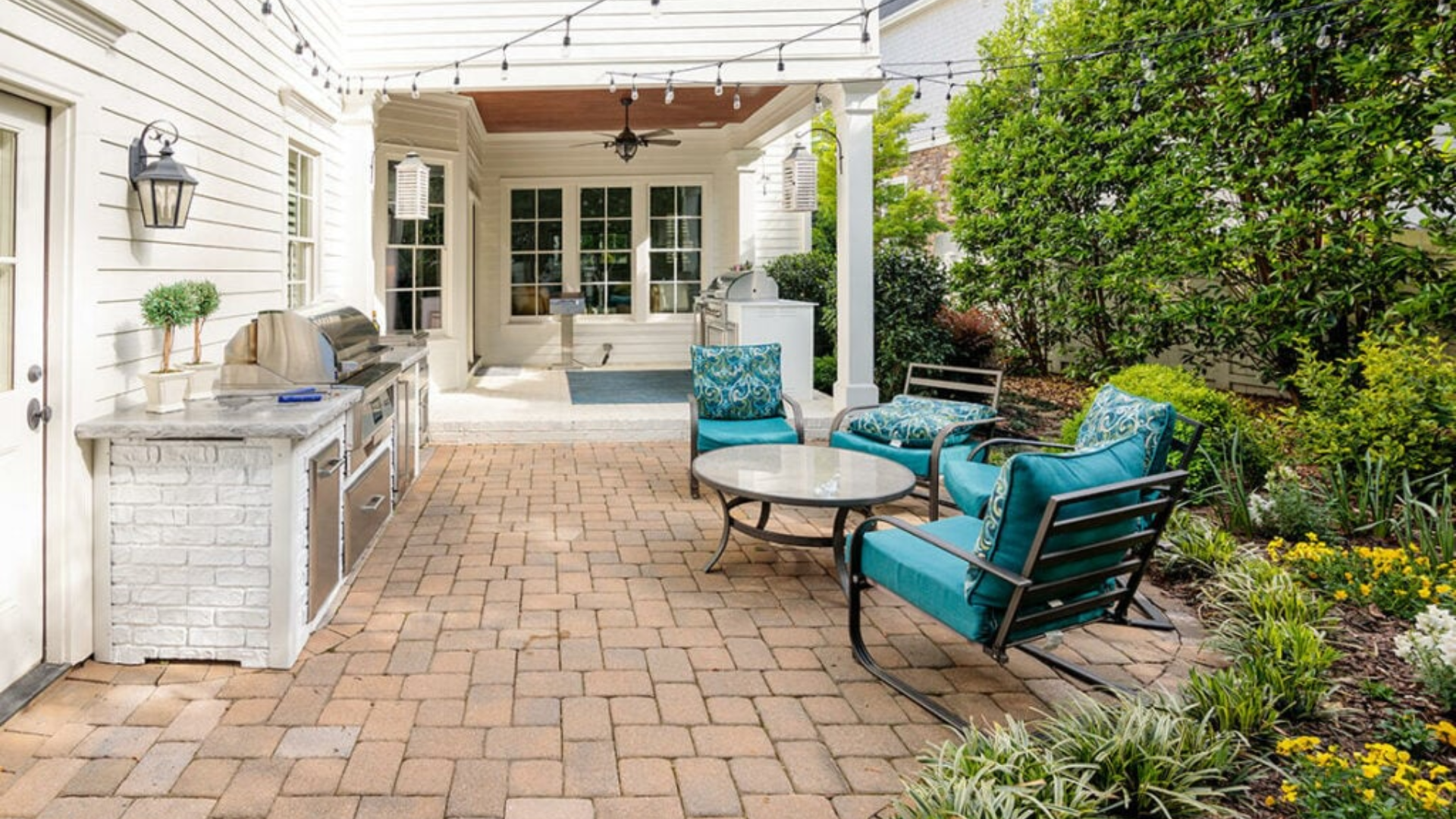
In this pattern, bricks of different lengths and widths are used together in a random yet balanced way.
The effect is textured and natural-looking, perfect for rustic or casual patios.
You don’t need a repeating sequence, just a good mix of proportions. I’ve seen this used in farmhouse and Mediterranean-style homes where a less polished look fits the space.
It’s forgiving to install and allows you to use leftover bricks from other projects. Just make sure your base is level, so everything settles smoothly.
16. Repeating L-Shape
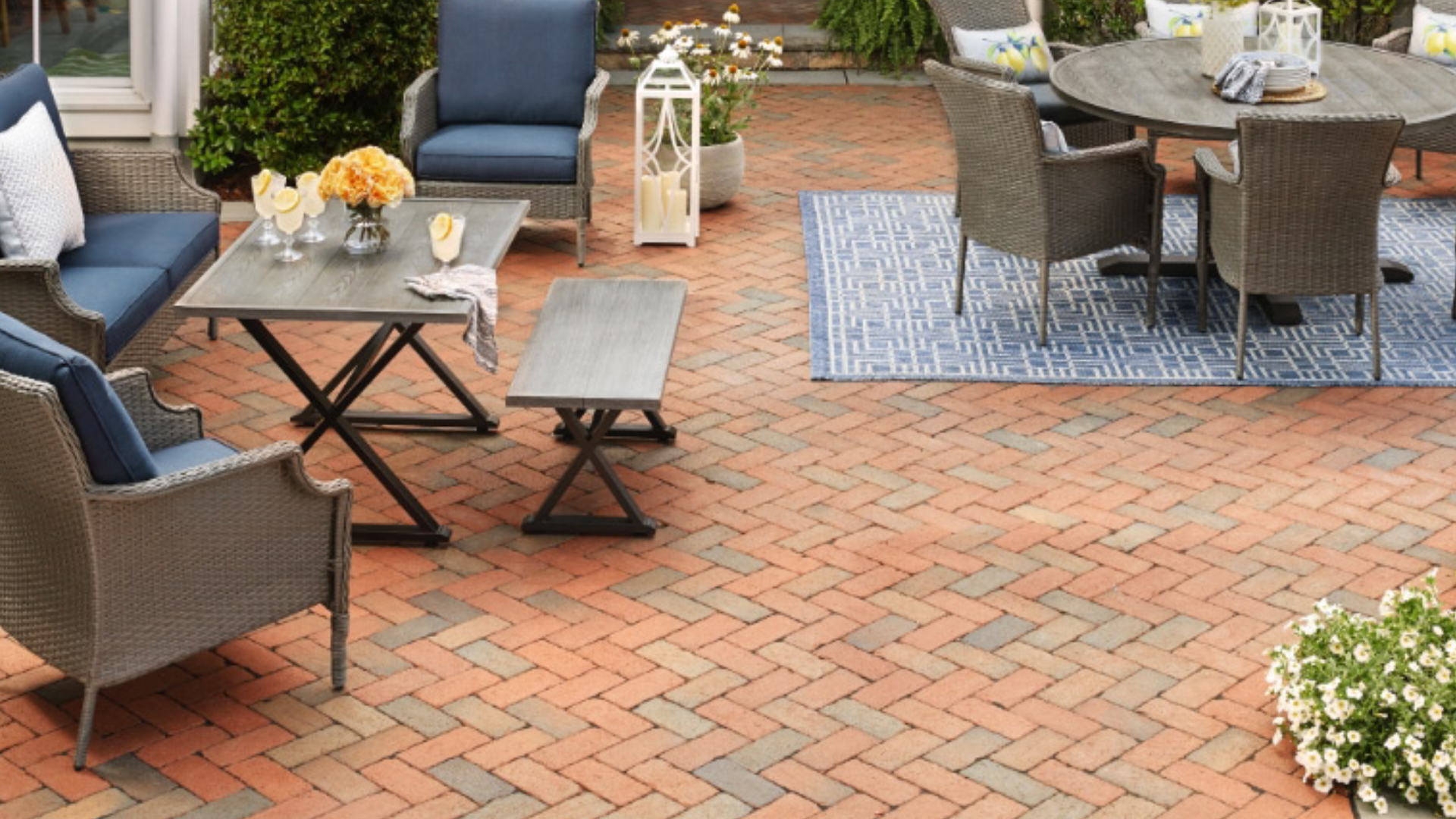
This pattern arranges bricks in repeating “L” shapes across the patio, forming a step-like visual rhythm. It adds personality and a geometric touch without being too complicated.
Each L uses three or four bricks, and the shapes rotate or align across the layout.
I find this works really well in small-to-medium patios where you want something playful but structured.
Use a single brick tone for a clean look or alternate colors to highlight each corner. It’s a unique pattern that stands out from the usual rows and diagonals.
17. Picture Frame Layout
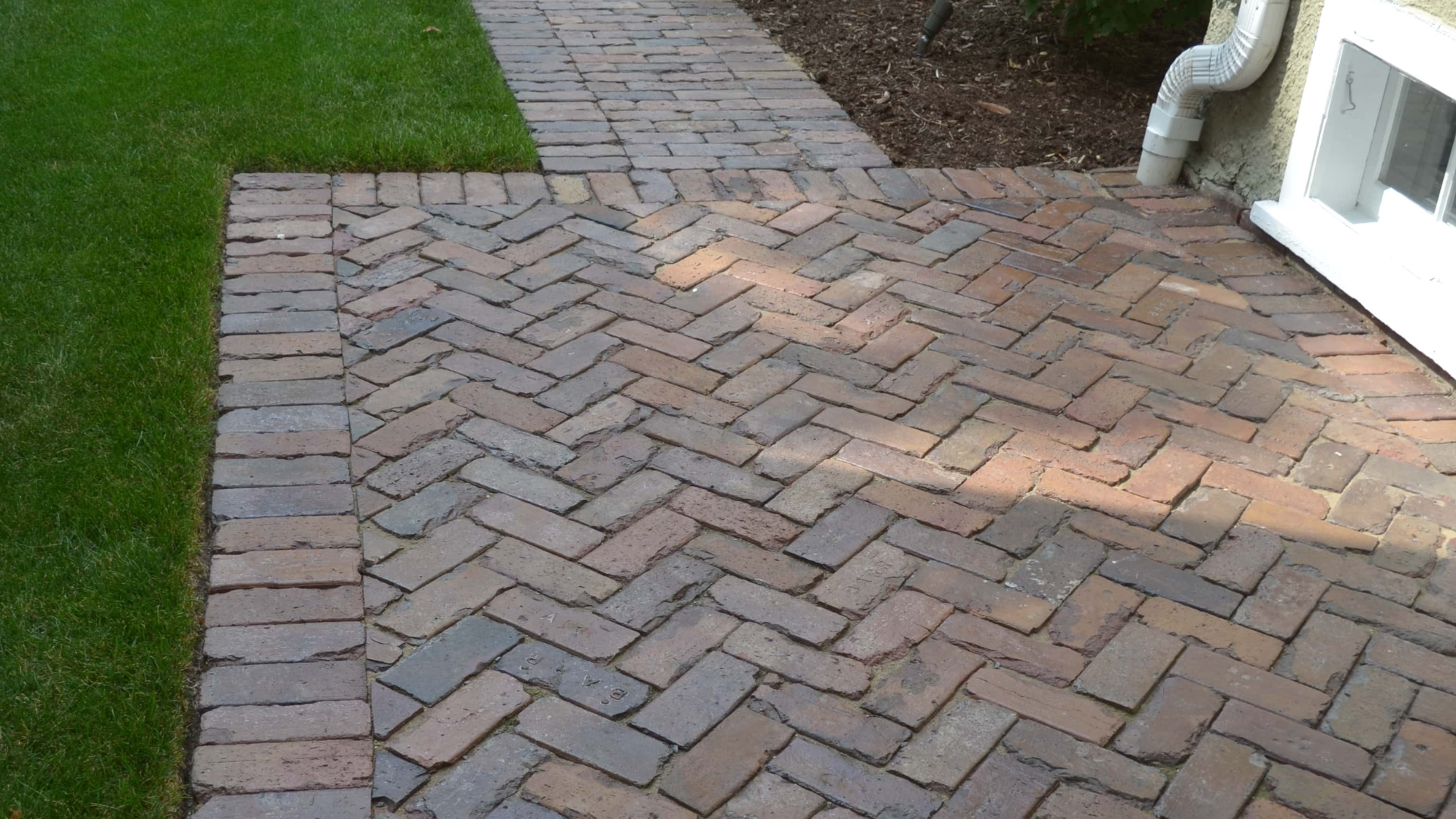
This design builds a “frame” around the edges of the patio using a row or two of bricks, with a contrasting pattern or brick color in the center.
It’s like framing a piece of art, but on the ground. I’ve used this idea in garden seating areas, and it’s great for separating zones visually.
You can match the border to nearby structures like a fence or deck to tie the look together. It adds polish and makes even a basic layout feel more intentional.
18. Color Block Pattern
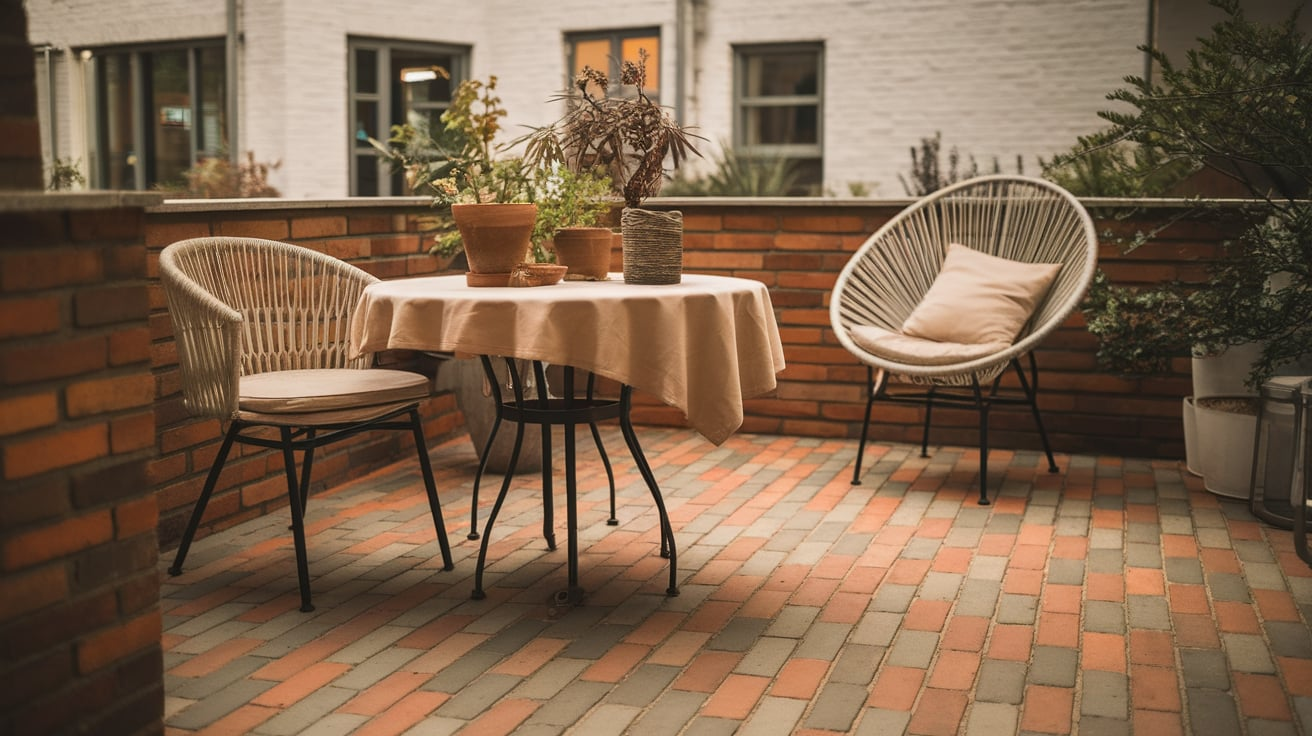
Color block layouts use large sections of different colored bricks to form bold, modern zones.
You might have a tan square for your dining space, a red block for lounging, and a gray area for planters.
It’s a fun and modern approach that turns the patio into a patchwork of function and style.
I think this works best in larger patios where you can play with scale and proportion. If you love color and want something different, this is a great option to try.
More Brick Patio Ideas to Try Out
Check out extra brick patio patterns and styles to make your outdoor space stand out:
19. Diagonal Running Bond
This is a twist on the traditional running bond. Instead of being laid straight, the rows are rotated 45° to create a diagonal effect.
It’s a simple change, but it gives your patio a lot more motion and energy.
I like this layout for corner patios or spaces that don’t follow straight lines. It helps draw the eye outward and makes the area feel bigger.
You can even border it with straight bricks for extra contrast. It’s easy enough for DIYers but still gives a stylish upgrade over the basic running bond.
20. Flemish Bond
Flemish bond is a historic pattern that alternates between full bricks (stretchers) and short-end bricks (headers) in each row.
It looks detailed and balanced, which makes it a popular pick for traditional or vintage-style patios. The design creates a repeating pattern that feels both neat and textured.
While it takes a bit more care to install properly, the visual payoff is huge.
You can keep it classic with all red bricks or mix in lighter tones for variety. It’s a great fit if you’re going for a stately, timeless outdoor space.
21. Windmill Pattern
In this pattern, four bricks form a square around a center brick set at a 45° angle, creating a “windmill” effect. It’s a classic European design with a lot of character.
You’ll often see it in older patios and public courtyards. Windmill layouts add texture and rhythm, making them perfect for traditional homes.
The look is decorative without being overwhelming. If you’re into vintage style, this one brings charm in every square.
22. Border with Inlay
This pattern frames your patio with one layout (like running bond or herringbone), then fills the center with a different style.
It’s a smart way to create visual contrast and make your space feel custom.
You can use darker bricks for the edge and lighter ones inside, or play with different patterns altogether.
I used this technique to highlight a seating area in my own backyard. It adds structure and can make large patios feel more organized.
23. Circular Center with Square Edges
This design starts with a circular pattern in the middle of the patio, surrounded by a square or rectangular border.
It gives you the best of both worlds – movement in the center and stability around the edges. It’s especially effective in large patios where you want to define zones.
The layout feels balanced and elegant, with just enough flair.
It does require a bit of cutting to make the bricks fit snugly between the two shapes, but the final look is totally worth the extra effort.
24. Grid with Diagonal Inserts
This layout creates large grid blocks (usually square or rectangular) and places a smaller diagonal pattern inside each one.
It’s a great way to add depth and direction to your patio design.
I like how it breaks up the space and keeps the eye moving. You can repeat the same insert in each block or mix it up with different angles.
This pattern gives off a more custom and detailed feel, and works well in formal gardens or contemporary settings where structure is key.
25. Cobblestone Look with Brick
This layout mimics the charm of cobblestone streets using standard bricks.
Bricks are laid in slightly irregular patterns, often with wide joints and some variation in orientation. It’s ideal for a vintage or European-inspired patio.
I like how this design brings a softer, lived-in feel without needing actual cobblestones.
You can blend colors to enhance the rustic vibe or stick with classic reds for a more uniform look.
26. Grid with Grass Joints
This modern pattern features bricks spaced with narrow grass or moss joints in between.
It’s both decorative and functional, helping with drainage and softening the look of a full-brick patio.
You’ll often see this in stylish backyard designs or high-end outdoor spaces. I think this layout works best in mild climates where grass or ground cover can grow year-round.
It gives your patio a relaxed, earthy vibe while still feeling structured. Plus, it’s a great way to reduce heat buildup on sunny patios.
27. Ladder Pattern
The ladder layout alternates rows of horizontal bricks with short vertical bricks, mimicking the look of, you guessed it, a ladder.
It’s a smart blend of symmetry and visual rhythm, and it works well in long patios or walkways.
This pattern is easy to install and doesn’t require fancy cuts. It adds just enough detail without feeling busy, and it plays well with both modern and traditional outdoor décor.
28. Herringbone with Border
Take a standard herringbone pattern and frame it with a neat row of bricks running parallel to the patio’s edge.
This small change makes a huge visual difference. It creates a “finished” look and helps the pattern feel more intentional.
I personally love adding borders because they define space and make patios look professionally done. You can use the same brick color or a contrasting shade for added flair.
29. Offset Square
Offset square uses small blocks of bricks arranged in squares, with each square offset from the next like tiles.
It gives your patio a modular, checkerboard feel but with more texture.
This layout is great if you’re aiming for a grid-based design that still feels warm and inviting. It’s flexible, easy to lay out in sections, and pairs well with border accents.
I’ve noticed this looks especially nice in front-entry patios or around garden features where you want a sense of formality.
30. Double Basket Weave
A twist on the classic basket weave, this version doubles up the brick pairs to form larger squares. It makes the pattern bolder and more structured.
This layout is ideal if you like the old-world feel of basket weave but want something with more impact.
It works best with uniform brick tones but can also handle subtle color changes.
I think this layout looks great in traditional backyard settings or paired with wooden pergolas and vintage-style furniture. It’s easy to plan and satisfying to see take shape.
No matter what your space looks like or what style you prefer, there’s a brick patio pattern that will fit just right.
From classic bonds to bold custom layouts, the design possibilities are nearly endless.
Brick Patio Installation Methods and Considerations
Before laying down your favorite pattern, it’s important to understand the main installation methods and what each one involves.
| Method | Description | Best For | Pros | Cons |
|---|---|---|---|---|
| Dry-Laid | Bricks are set on a compacted gravel and sand base without mortar. | DIY projects, flexible surfaces | Easier to install and repair, allows drainage | May shift over time, needs occasional re-leveling |
| Mortared | Bricks are laid over a concrete slab and held in place with mortar. | Permanent patios, heavy-use areas | Very stable and long-lasting | Harder to fix, takes longer to install |
| Sand-Set | Similar to dry-laid but with polymeric sand brushed between the joints. | Moderate-traffic areas | Weed-resistant, helps lock bricks in place | Needs periodic re-sanding and sealing |
| Gravel Base Only | Bricks rest directly on a crushed stone base without added sand or mortar. | Rustic patios, temporary setups | Quick install, excellent drainage | Less stable, uneven surfaces more likely |
| Hybrid | Mix of mortar border with dry-laid interior for design and flexibility. | Decorative or mixed-use patios | Combines stability with easier repairs | Requires more planning and experience |
Each method has its own strengths depending on your budget, design goals, and long-term plans.
How to Enhance Your Brick Patio for Comfort and Style
Once your brick pattern is in place, adding the right features can take your patio from simple to standout.
- Add Built-In Borders: Create a neat, finished look by outlining your patio with a different brick color or layout.
- Use Outdoor Lighting: Install low-voltage lights along the edges or in between bricks for nighttime charm and safety.
- Include Greenery: Add raised garden beds, planters, or climbing vines nearby to soften the hardscape and bring in natural beauty.
- Layer in Furniture: Choose cozy seating, outdoor rugs, and a table set that matches your style and fits the space comfortably.
- Install a Fire Pit or Water Feature: Add a focal point that brings people together and makes your patio feel more like an outdoor living room.
- Provide Shade: Use a pergola, umbrella, or shade sail to keep the area cool and inviting, especially in sunny spots.
- Decorate with Accents: Throw in pillows, lanterns, or small sculptures to show off your personality and tie everything together.
With just a few extra touches, your brick patio can become a warm, welcoming space you’ll love spending time in.
Conclusion
I’ve always believed that the little choices, like a brick pattern, can make a big difference in how your outdoor space feels.
If you love classic looks like herringbone or want to try something bold like a spiral or checkerboard, there’s a pattern out there that fits your style.
I’ve learned how much personality each brick pattern can bring to a patio.
Once the bricks are in place, adding lights, plants, and comfy furniture can really make the space feel warm and inviting.
Your patio should be a place that feels like home, where you can relax, host friends, or simply enjoy a quiet morning.
If you’re starting your own project soon, I hope these ideas help you feel confident and inspired.

